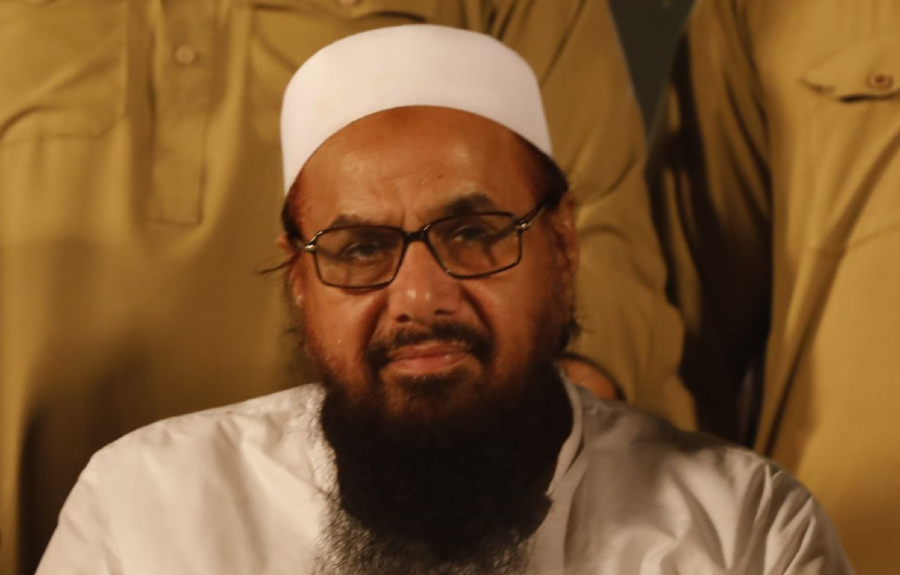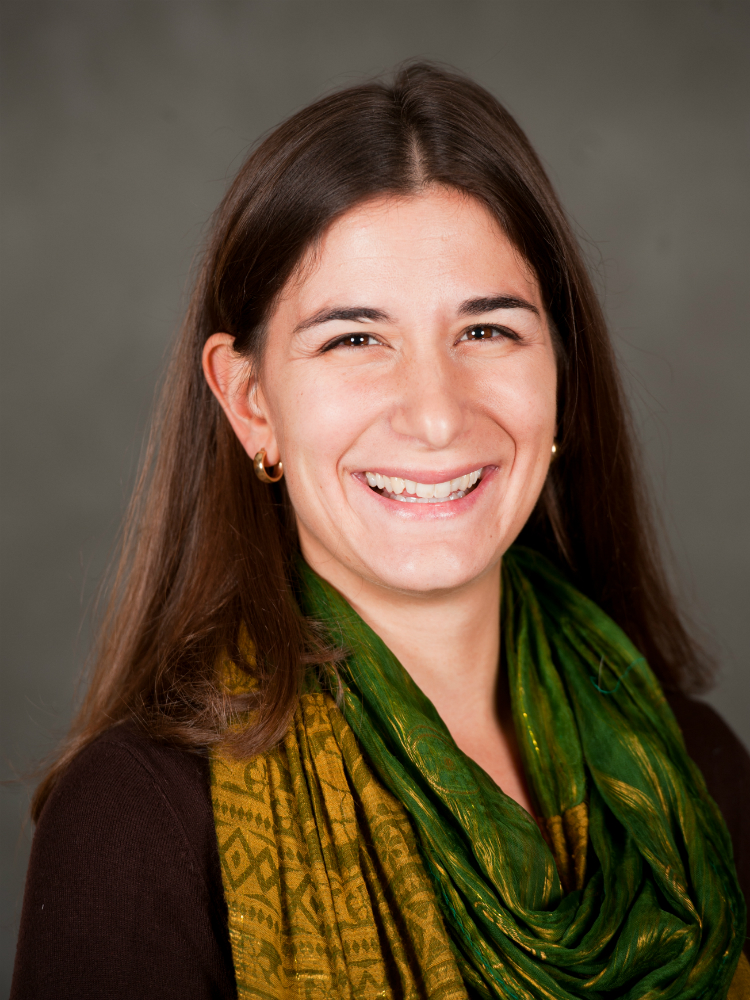The Importance of Terrorist Founders and the Role of Safe Havens
The protection that terrorist sanctuaries afford allow leaders to cement their ideologies and preferred tactics in their groups.

Published by The Lawfare Institute
in Cooperation With

Editor’s Note: Many terrorist groups are small, and their initial leaders exert outsized influence on their future direction. Drawing on their recent book, Tricia Bacon of American University and Elizabeth Grimm of Georgetown University examine the different ways founding leaders matter. They argue that a safe haven is particularly important, enabling leaders to avoid counterterrorism pressure and, in so doing, more deeply imprint their ideas on the groups they lead.
Daniel Byman
***
Although the killing of al-Qaeda’s former leader, Ayman al-Zawahiri, highlights the constant threat many al-Qaeda leaders face, some of the other terrorist leaders in South Asia reside in areas that “over the horizon” counterterror capabilities cannot reach. These groups benefit from the continued survival of their founding leaders, who endure due to the protection afforded them by their safe havens.
In our recent book, “Terror in Transition,” we argue that founders of terrorist organizations establish the framework from which all subsequent leaders operate. We outline the critical role that terrorist founders play, using the cases of Lashkar-e-Taiba and Jaish-e-Mohammed to illustrate our points. As a result of the extended tenure of their founders, Lashkar and Jaish have well-established frameworks for both the how (the tactics and resource mobilization of the group) and the why (the framing of various actions) of their organizations, which have been developed over the course of decades—nearly 40 years for Lashkar and more than 20 for Jaish. Their founders’ long tenure has been enabled by the safe haven they enjoy under the Pakistani security establishment.
What Does a Founder Do?
Founders create the how and the why of a terrorist organization. The founder’s role in establishing the base of the organization, the framework from which all successors will position themselves, cannot be overestimated.
Every enduring terrorist group needs a convincing answer to the question why. Why fight? What is worth dying to achieve? Without answers to those questions, the terrorist organization will struggle to thrive or even survive. The why is what the group declares it wants to achieve. In the case of Jaish, for example, founder Masood Azhar formed the group as a splinter from Harakat ul-Mujahedeen with the same primary motivating purpose: the unification of Indian-administered Kashmir with Pakistan.
The how of a terrorist group refers to the means they choose to achieve the why. How will groups mobilize resources to achieve their mission? What tactics will they use, both operational and non-operational? Violence is an important tactic for terrorist groups: Why engage in violence, and when is it appropriate to effect change?
We argue that the how comprises two elements: tactics and resource mobilization. With regards to tactics, the founder establishes tactics based on the group’s political opportunity structure for the time and context in which they are operating. For example, some groups will use terrorism and later abandon it, sometimes swearing off violence altogether. With regards to resource mobilization, these processes are needed to secure followers and manage revenue. As many terrorist organizations do not survive their initial years, the ability to develop and embed processes through which a group garners resources is a critical facet of the how that founders are charged with establishing.
It is critical to note that the how and the why are not static, even under a founder. Sometimes the founder himself can upend the how and the why that he initially established, especially if he is at the helm of a group for an extended period of time.
And just as a business organization’s adaptive capacity can be constrained by the entrepreneur who created it, a terrorist organization can be constrained in its adaptation by the contours created by its founder. The founder can set the parameters of how much the group can change and still be acceptable to the core membership. Any change created by a successor can take two forms: incremental or discontinuous. Incremental change refers to changes that do not alter a group’s fundamental nature. This type of change does not challenge or upend the existing how and why of the group, with any changes falling within the natural evolution of the group. In contrast, discontinuous change refers to the introduction of a change that would transform the group. Discontinuous change radically upends either the how, the why, or both.
In addition, the amount of counterterrorism pressure faced by the group impacts the leader by shaping the operational environment. In spaces where counterterrorism pressure is high, the group faces targeted and/or widespread kinetic attacks against their members, bases, and supporters; law enforcement entities are committed to the arrest, prosecution, and imprisonment of terrorist members and supporters; authorities restrict freedom of movement through border security; and limitations are imposed on the ability to use financial institutions. In contrast, groups facing low counterterrorism pressure have the freedom to undertake core activities—such as fundraising, training, communications, and recruitment—with minimal fear of counterterrorism action against them. And nothing defines low counterterrorism pressure like a safe haven.
Who Still Has a Founding Leader?
In the Sunni jihadist movement, few well-established organizations still have their founding leaders. From al-Qaeda’s Osama bin Laden to al-Shabaab’s Ahmed Abdi Godane to Abu Sayyaf’s Abdurajak Abubakar Janjalani, counterterrorism actions around the world have successfully removed many powerful founders.
But there are two notable exceptions to this norm, Lashkar-e-Taiba’s Hafiz Saeed and Jaish-e-Mohammed’s Masood Azhar. The longevity of these leaders is attributable to the safe haven they receive from the Pakistani security establishment. In addition to being client groups of the Pakistani security establishment, both organizations and their founders are based in Pakistan’s most politically influential province, Punjab. And they enjoy a sanctuary that even the U.S. “over the horizon” capability does not penetrate.
That Lashkar-e-Taiba still has its founder is particularly noteworthy. It is the only group with a surviving founder among the panoply of Sunni jihadist organizations that emerged out of the anti-Soviet jihad in Afghanistan during the 1980s. Since that time, Hafiz Saeed has developed a multifaceted why for his organization—which, as an Ahl-e-Hadith group, a South Asian variant of Salafism, is an anomaly in Pakistan, which is dominated by Deobandi militant groups. Lashkar under Saeed has two primary goals. First, Lashkar seeks to wrest Kashmir from Indian control and unify it with Pakistan. Second, the group seeks to establish its interpretation of an Islamic state in Pakistan. The group has been involved in other activities, most notably the Taliban-led insurgency in Afghanistan, but Saeed has established these as the group’s top priorities.
Under Saeed’s leadership, the group’s approach toward these two missions, its how, has been dramatically different according to the theater in which it is operating. To achieve its aims in Kashmir, the group has relied on violence, particularly its infamous fedayeen attacks in which operatives are sent on operations with little chance of survival but do not deliberately commit suicide. Its violence has extended beyond Kashmir, most notably its attack on Mumbai in 2008. In a shooting rampage that lasted almost four days, 10 operatives targeted soft targets across the city, including a café, hotels, a Jewish center, and a train station, resulting in 166 deaths.
In stark contrast, Lashkar has abstained from violence in Pakistan entirely. It operates primarily as a social service and proselytization organization. Its headquarters in Muridke is a sprawling complex with educational, religious, and health facilities. In 2017, Saeed added a political party, the Milli Muslim League, to the group’s how, despite his long-standing opposition to democracy. Lashkar’s abstention from violence in Pakistan reflects the group’s intense loyalty to the Pakistani state, which at times has constrained its activity in Kashmir. When Lashkar’s two missions conflict, Saeed has opted to adhere to the Pakistani security establishment’s wishes.
To pursue this mission, Saeed’s group has recruited heavily, though not exclusively, from Punjab. It once relied on the Pakistani security establishment for funds but has become more financially self-sufficient over time by exploiting its sanctuary in Pakistan to generate donations from within Pakistan and expand by soliciting donors in the Gulf.
The other major Sunni jihadist organization with its founding leader is Jaish-e-Mohammed. Jaish was formed in the wake of a hijacking in 1999 that secured Azhar’s release from prison in India. He then quickly formed his own group, breaking away from Harakat ul-Mujahedeen. Jaish soon became the dominant Deobandi militant group in Pakistan. Azhar shares Saeed’s why in Kashmir, namely seeking to coerce its unification with Pakistan. It also shares the goal of an Islamic state, albeit under its own interpretation of Islam.
Jaish’s how also includes violence in Kashmir and social service provision in Pakistan. But in addition to their ideological differences, Jaish has a strong sectarian streak that has included involvement in violence in Pakistan. It is also more tightly interconnected with other Deobandi militant groups in the region, which has included some of its members cooperating with anti-state Deobandi groups, especially in the years after 9/11. Some Jaish members even turned against the Pakistani state after then-President Pervez Musharraf capitulated to U.S. pressure to support the U.S. war in Afghanistan. Perhaps most famously, disaffected Jaish members were involved in a subsequent plot to assassinate Musharraf. But in the past decade, the Pakistani security establishment has regained its grip on the organization, in part by relying on Azhar’s leadership.
Both groups have benefited from safe haven in Pakistan for decades. One reflection of the benefits of that relationship is the survival of their founding leaders. These founders’ why and how have been inextricably shaped by their relationship with the Pakistani security establishment. However, with these long-standing founders, neither group has weathered the challenge of succession, and the lines of succession for Saeed and Azhar are unclear, creating the potential for infighting and competition when succession finally occurs.
The Founder’s Legacy
The founder’s background, his training, his social ties with his religious or social community, and his organizing ability all serve as factors that help him mobilize the resources necessary to engage in violence and the ideational pull necessary to attract followers.
Sometimes the founder’s personality and values become interwoven with the group’s how and why; as time passes, the founder and the group become virtually indistinguishable, as was the case with Shoko Asahara and the group he founded, Aum Shinrikyo, and to some degree with the two Pakistani militant groups examined here. Other founders adhere to the idea of mission centrality, rather than identity centrality, precisely to ensure that the how and why of their groups do not die with them, as was seen with bin Laden’s leadership of al-Qaeda. Wherever founders fall on this spectrum, there has been a tendency in policymaking circles to write an obituary for a group when its founder’s tenure has ended. However, groups’ ability to transition to successors provides tremendous insight into the ability of the founders to create a durable how and why for the group, a legacy that outlives them.
In the cases studied here, it is clear that the degree of counterterrorism pressure affects the length of a founder’s tenure. The provision of safe haven has allowed Lashkar-e-Taiba’s Hafiz Saeed and Jaish-e-Mohammed’s Masood Azhar to lead their groups across decades. Similarly, it is difficult to overstate how deeply al-Qaeda and its founder bin Laden benefited from its safe haven in Afghanistan, where it used the relative protection provided by the Afghan Taliban to plot the complex terror plot of 9/11. It is critical to examine now how Saeed and Azhar crafted their how and why to understand how the loss of these leaders would affect their groups and what kind of leaders might succeed them.






